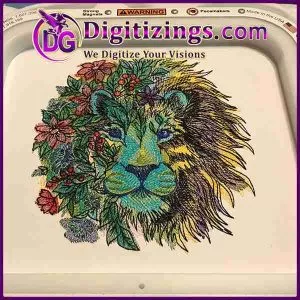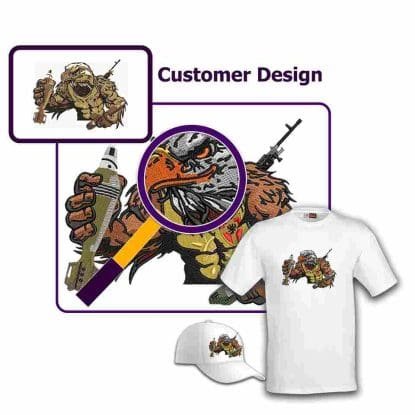Welcome To Digitizings
Best Online Custom Embroidery Digitizing
Best Online Custom Embroidery Digitizing
&
Vector Art Work Services
Vector Art Work Services
We are providing excellent quality best embroidery digitizing and vector art services at the lowest cost & quick turnaround. Pay with PayPal or credit & debit card. We can convert any of your logo, design, image, artwork, screenshot, into your required file format.
We are providing excellent quality best embroidery digitizing and vector art services at the lowest cost & quick turnaround. Pay with PayPal or credit & debit card. We can convert any of your logo, design, image, artwork, screenshot, into your required file format.
As A World Best Online Embroidery Digitizing Agency We Provide Excellent Quality Rocket Speed Turnaround Challenging Price Free Editings Free Design Size Change Free Design Backup All Embroidery Machine Formats 3D Secured Payment Method PDF Preview Befor Pay 24/7 Live Support
Custom Embroidery Digitizing Logo Digitizing Image Digitizing PNG Digitizing PDF Digitizing Patch Digitizing Jacket Designs Cap Logo Digitizing 3D Puff Digitizing
Digitizings Provide You Online Custom Embroidery Digitising & Raster To Vector Art Services
Digitizings Provide You Online Custom Embroidery Digitising & Raster To Vector Art Services
Embroidery Digitizing Services 3D Puff Logo Digitizing Custom Logo Digitizing Image Digitizing Png & JPG Digitizig Cap & Hat Logo Digitizing
Embroidery Digitizing Services
We can convert any of your design file into your required embroidery machine file. So get your design digitized by our expert digitizers with 100% Guaranteed Quality. Try us today !
Vector Art Services Raster To Vector Low Resolution To High Image Vectorization Logo Vectorize Service Redraw Logo Create High Quality Logo Image Digitizing Png & JPG Digitizig Cap & Hat Logo Digitizing
Vectorize Art-Works Services
We can convert any of your logo, raster to vector art, image, artwork or any of your low resolution design into high resolution at lowest cost with 100% Guaranteed Quality,Try us today !
Get Affordable Price Quote
Digitizings offer you a free quote, if you want to get an estimated price for your design digitizing or vectorization then simply send us your design we will give you a reasonable 100% free price quote.
Why Professional Embroidery Business Owners Choosing us ?
Digitizing.com Overview
Because We Provide Quality Embroidery Digitizing Services. Our team of experts makes sure that every design is perfect before it is sent to the customer. We also have a fast turnaround time so you can get your order quickly.
If you’re looking for high-quality embroidery digitizing and vector art services, look no further than us! We guarantee 100% quality and the fastest delivery time of 4-12 hours. With over 10 years of experience in embroidery digitizing services, our pro artists are the best in the business. Plus, our secure and reliable platform makes ordering easy and stress-free.
Who are we?
Company Name Digitizing Go
Company Number 13909751
Our address 1 Burrows Road, Skewen, Neath, Wales, SA10 6AE
Owner Name MR DANIEL
We are a digitizing agency, Who provides online custom embroidery digitizing services and vector art services provider., We are registered as Digitizing Go . Our company were founded by Hannah Wallace since 2009. She is expert digitizer and developed thousands of digitizers during her 13 Years of experience in custom embroidery digitizing.
Our website is a secured where every embroidery business owner gets Excellent Quality Digitizing With 3D Secured Payment Method PayPal. This Payment Method Let You To Make Private Transactions Instead Of Giving Any Card Informations On the Website. So you won’t need to worry about how to pay at all because we are using the word first secured payment method paypal.
Our History
We Are Providing Online Custom Embroidery Digitizing Services Since 2009, We Use Paypal Because This One Is World Best Secured Payment Option For Customers.
So One of the major tensions about fraud or scamming or giving private information to a third party is resolved for every visitor for digitizings.com.
Our Guarantee About Online Embroidery Digitizing Quality
Custom Embroidery Digitizings Services Are Offered by different companies and individuals but why we are on top in quality and protection. We Guarantee About Quality,
We offer our customers to get a preview before they pay which removes the second biggest concern and tension for embroidery machine owners.
Our Unique Features Which You Won't Get From Others
100% Guaranteed Quality
We Offer 100% Satisfaction About Your Design Quality. We Don't Compromise About Qualities Of Our Customer Designs.
SuperFast Turnaround (1- 3Hr)
Digitizings Off You Special Super Fast Turnaround Time 1-3 Hours , If You Get Digitizing From Us You Can Boost Your Business.
Get Preview Before You Pay
One Of The Best Feature We Provide Is a Free Preview Of Your Design, How It Will Look After Embroidery Digitizing. So You Can Design Before Pay
3D Secured Payment Paypal
We Are Using Paypal Payment Method Because It's First Safe & Secured Payment Method. So You Won't Get Any Security Issues
Free Unlimited Editings
We Offer You Unlimited Free Editing, So If You Require To Add Or Remove Anything, We can do it for you.
Free Design Back up
Each Design Digitized Will Be Saved As Backup Center, So If you Lose It, You Can Easily Get It From Us.
Free Format Change
You Can Your Design File At Any Time With Us, No Matter Design Digitized By Us Or Others
Free Design Protection
Only We Offer You Design Protection Free Of Cost, So No One Else Will Steal Your Design.
Birthday Offer
We Offer 100% Satisfaction About Your Design Quality. We Don't Compromise About Qualities Of Our Customer Designs.
Events Discount
We Offer You Special Super Fast Turnaround Time 1-3 Hours , If You Get Digitizing From Us You Can Boost Your Business.
Weekly Free Design
One Of The Best Feature We Provide Is a Free Preview Of Your Design, How It Will Look After Embroidery Digitizing. So You Can Design Before Pay
Free Size Change
We Are Using Paypal Payment Method Because It's First Safe & Secured Payment Method. So You Won't Get Any Security Issues
Quality Proof Results Shared By Our Customers






